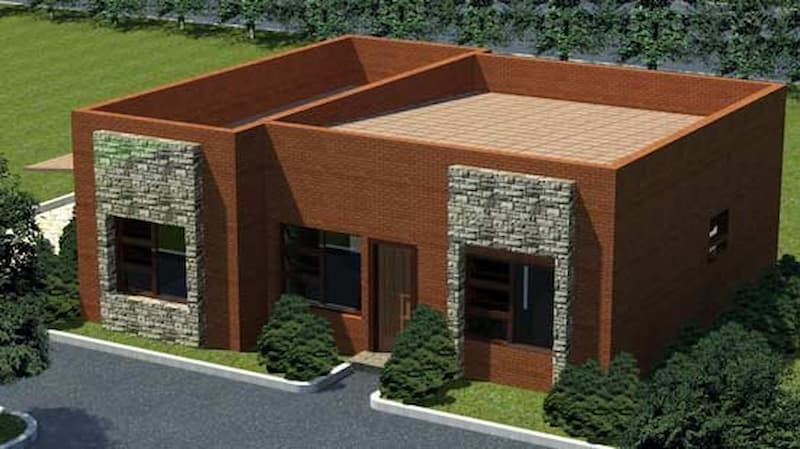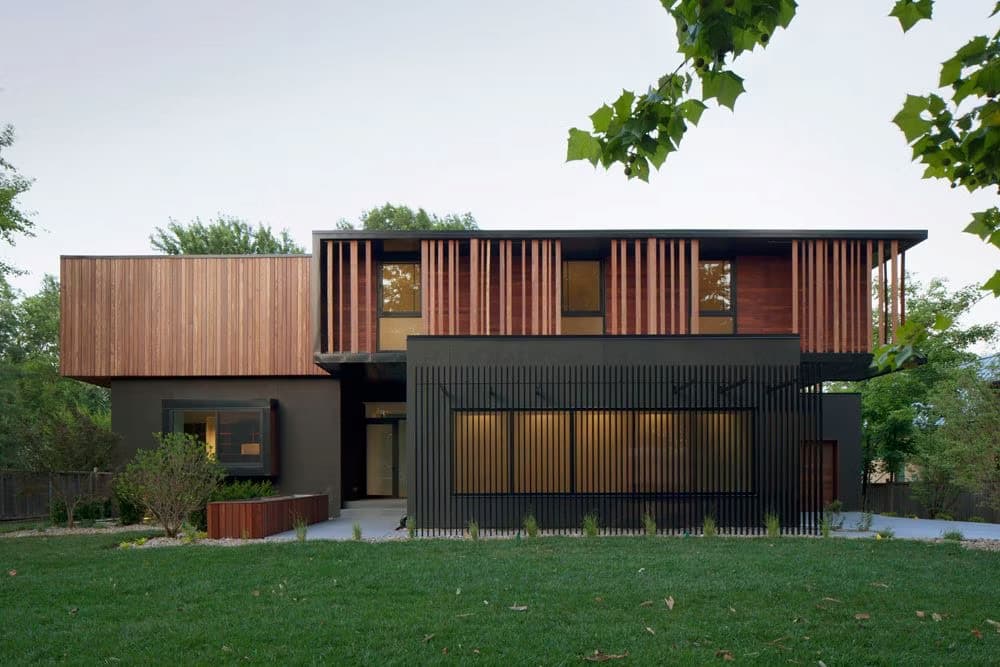Flat Roof Pros, Cons and Misconceptions
Roofing is an important and often dreaded aspect of a home for most homeowners. After all, it’s not cheap to replace a roof, and when something goes wrong, it can be a real headache. If you’re contemplating installing a flat roof, it’s essential to understand the flat roof pros and cons before making a decision.
Being that the flat roof is not the most popular type of roof for homeowners there are a few myths to bust. Some misconceptions about flat roofs can lead people to believe they’re a bad choice for their home. This is not always the case.
Here, we’ll dispel some of the most common myths about flat roofs and explore the advantages and disadvantages of this roofing system. After reading our flat roof pros, cons and misconceptions, you should feel well-armed to tackle the issue of how to choose the right roof for your home or place of business.
The advantages and disadvantages of flat roofing systems
Every type of roofing system has its own set of advantages and disadvantages. When it comes to flat roofing systems, there are several pros and cons that you need to be aware of. Read through our list of flat roof pros and cons so that you can decide if this is the right type of roofing system for your needs.
Pros:
1. Installation is easy and quick: When it comes to installation, flat roofing systems are very easy and quick to install. This is because there are no complex structures involved. The roofing material is laid down on the roof deck and fastened in place. This makes the flat roofing systems ideal for new construction projects where time is of the essence.
2. Cost-effective: Compared to other types of roofing systems, flat roofing is typically much more affordable. It is an excellent option for those on a budget or who want to save money on their roofing project.
3. Offer a low-cost maintenance solution: When it comes to maintenance, flat roofing systems are very easy to take care of. There are no complex structures to worry about, and the roofing material is very durable. This means you won’t have to spend much money on repairs or replacements over time.
4 Provide additional (extra) space: One of the best advantages of flat roofing systems is that they provide additional space at the top of the building. This space can be used for storage, an outdoor lounge area, solar panels, or an urban garden.
5. Easy to inspect and repair: When it comes to inspection and repairs, flat roofing systems are very easy to access. This is because there is no complex structure in the way. This makes it much easier and less expensive to fix any issues that may arise.
Cons:
1. They do not drain easily as pitched roofs: They require special drainage systems to ensure that water does not accumulate on the roof and cause leaks. Without adequate drainage, flat roofs can become damaged easily by water.
2. They have less space for insulation: Although flat roofs do provide additional space, they have less room for insulation when compared to pitched roofs. They are affected more by weather changes.
3. Have less ability to withstand heavy loads: Special mechanisms must be put in place to ensure that flat roofs can withstand the weight of snow, ice, and high winds.
10 Myths about flat roofs you can put to rest
It’s easy to get caught up in what other people tell you. Identifying flat roof pros and cons is one thing but separating fact from fiction is completely different. Sometimes between the non-professionals fact becomes fiction, fiction becomes fact and it can leave you in a false reality. We’re here to bust the myths about flat roofs and make your life complete! Here we go…
#1) Flat roofs are weaker and cannot handle the weight of snowfall
During a flat roof’s design and installation process, architects and engineers consider many factors, including load-bearing capacity and management. The weight of snowfall is one of the elements they factor in when designing a flat roof. They compute the average weight of snow in the area where the building is located and then plan the roof accordingly. In most cases, flat roofs can handle more weight than pitched roofs.
The design must adhere to strict construction requirements ensuring that the safety and stability of the building are not compromised. You only need to exercise a little caution, such as:
- Inspecting the roof before snowfall to ensure that there is no build-up of leaves or debris
- Shovelling the excess snow off the roof to minimize the load on the roof
- Keeping gutters and drains clear to prevent water pooling on the roof
- Periodically checking for cracks or leaks and getting them repaired immediately
#2) Flat roofs are more prone to leaks
Every roof, regardless of its type, is susceptible to leaks. Roofs are constantly exposed to the elements, whether pitched or flat, which can take a toll over time. It all depends on the materials used and the quality of the installation. A well-designed and installed flat roof is just as leak-proof as any other type.
A flat roof protects a building from the elements by creating a watertight seal. The key to a watertight seal is a proper installation with high-quality materials. They keep water out and prevent leaks. There are different types of systems that are used. The most common are built-up roofs, modified bitumen roofs, and single-ply roofs. All of these systems have been tested and proven effective in keeping water out.
#3) Flat roofs are perfectly level or…flat!
When people think of a flat roof, they often picture a level surface. That’s because the word “flat” is in the name. However, that’s not always the case. A flat roof design incorporates a slight pitch to ensure proper drainage. If there were no pitch, rainwater and melting snow would pool on the roof and eventually leak into the building. The slope is usually very slight, and you might not even notice it.
#4) Flat roofs offer no insulation
To begin with, all roofs, no matter their type, offer some form of insulation. The attic space in your home is typically insulated to keep the heat in during the winter and the heat out during the summer. The same principle applies to flat roofs. They are also insulated to regulate the temperature inside the building.
Different types of insulation can be used on a flat roof. The most common are fibreglass, rock wool, polyurethane foam, and expanded polystyrene. Each type of insulation has its own set of benefits. For example, fibreglass is one of the most affordable options, while polyurethane foam offers the best thermal resistance.
#5) Flat roofs are too expensive
Flat roofs are affordable when you factor in the cost and the long-term savings. Installation costs are lower than pitched roofs, and they last just as long, if not longer. Plus, they require less maintenance over time, which saves you even more money. It takes a few man-hours to install a flat roof, reducing labour costs. Additionally, a flat roof requires fewer materials, which further reduces the cost.
Pitched roofs require more material because of their complex design. They also take more time to install, which increases labour costs. In the end, a flat roof is more affordable and easier to maintain than a pitched roof.
#6) Routine inspection of a flat roof is unnecessary unless it leaks
This is one of the most dangerous myths about flat roofs. Just because there is no visible damage does not mean the roof is in good condition. It is crucial to have your flat roof inspected at least twice a year by a qualified professional.
A flat roofing contractor will be able to spot any potential problems and make repairs before they turn into expensive damage. Prevention is always the best cure. Regularly inspecting your roof can catch problems early and avoid costly repairs down the road.
#7) Flat Roof Repair is a Simple Process that Anyone can do.
Perfecting the skills to fix a flat roof is not an easy task. It takes years of experience and training to be able to repair a roof properly. One wrong move can lead to bigger problems and more expensive repairs.
It is always best to leave roof repairs to the professionals. Flat roof repair and installation require detailed knowledge of the roofing system and the materials used. A qualified professional will also have the necessary tools and equipment to repair your roof properly.
#8) Water can pond on a flat roof and cause leaks
One of the most common misconceptions about flat roofs is that water can pond on the surface and cause leaks. This is not the case because flat roofs are designed with a slight pitch to ensure proper drainage. They are not entirely flat. If there were no pitch, rainwater and melting snow would pool on the roof and eventually leak into the building. The pitch is usually very slight, about 1/8 inch per foot, and you might not even notice it.
#9) Flat roof maintenance can interrupt business operation
Many people believe that their activities will be disrupted for the better part of the day during maintenance. The truth is, with a properly designed and installed flat roof, you will not even know when maintenance is happening. Most of the time, it is done during regular business hours with minimal disruption. Sometimes, it might even be possible to do the work after hours or on weekends. The good thing about maintenance is it involves minor repairs such as clearing gutters and downspouts, checking the drains, and applying a fresh coat of sealant. All these can be done without interrupting your business operation.
#10) Flat roofs offer limited design possibilities
The truth about flat roofs is that they offer a lot of design possibilities. You are not limited to the traditional boxy look. Many flat roof styles can be used to create a unique and stylish look for your building. You can add skylights, solar panels, and other features to your roof to create a one-of-a-kind look. With so many possibilities, you are sure to find a flat roof style that will suit your taste and needs.
Get the most from your flat roof investment
Flat roofs are not as bad as people make them out to be. With proper design, installation, and maintenance, they can last for many years and provide reliable protection for your home or place of business.
Now that we’ve busted the myths and separated the flat roof pros and cons you should feel enlightened and ready to make an informed decision about the type of roof you choose!
If you have any questions or would like to learn more about our roofing services, please contact us today.
Read more flat roofing articles from our team:



